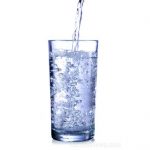
Polymer solar cells can’t compete with silicon but they will serve a different function
Thursday, July 12, 2018 by David Williams
http://www.realsciencenews.com/2018-07-12-polymer-solar-cells-cant-compete-with-silicon-but-they-will-serve-a-different-function.html

As the solar industry keeps growing bigger, the search for more efficient and more cost-effective solar panel construction materials goes on as well. There are a number of known alternatives available on the market, but none of them can quite come close to the standard material of choice – silicon. Still, there is a case to be made for the usefulness of polymer solar cells (PSCs) as an alternative to traditional silicon solar cells.
The majority of solar cells you might see in use today are of the silicon variety, primarily because of how efficient they are at getting the job done. In comparison, organic polymer solar cells aren’t nearly as effective. Indeed, it is known in the renewables industry that PSCs will probably never be adequate for a full-on megawatt solar farm. But new research suggests that it could be perfect for certain kinds of uses.
PSCs are comprised of organic polymers that can absorb light and convert it to electricity. According to a new paper from AIP Publishing, which was written by Paul Berger and Minjae Kim of Ohio State University and published in the Journal of Renewable and Sustainable Energy, PSCs could indeed prove to be extremely valuable despite the many challenges they face.
As a report on the study states, there is a huge potential to mass-produce non-toxic and disposal solar panels through the use of roll-to-roll production with PSCs, even if they might never match the durability and efficiency of actual inorganic solar cells. For this reason, it’s worth exploring options as far as building solar-powered installations with them are concerned.
One example of a potential application for which PSCs could be used are freshness sensors on food packaging in supermarkets. They can be used through the overhead lights in storage shelves, where they could run efficiently with little or no maintenance. Another example is in the creation of so-called smart kitchens, where they could help reduce food waste and even automate grocery lists.
As Berger remarked, PSCs have more than a handful of potential applications. “PSCs have this ability to be flexible, because they basically are plastics, so you can put them on backpacks, jackets, and even coffee creamer – a while range of things where it’s at the point of use,” he said. “It’s a disruptive business model.”
Part of the reason why PSCs are so useful is the fact that the polymers used in them can be dissolved in solvents and then printed onto flexible backing afterward by using cheap roll-to-roll production methods. Berger further adds, “This printing press is not unlike the one for printing your Sunday newspaper, but instead of three primary colors and black, you’re printing the four or five different layers needed for the solar cell, diodes and transistors.” With the roll-to-roll production process, new applications also become possible such as wrapping up vehicles in the material, laminating windows, or even covering entire buildings.
As you can imagine, these kinds of applications can open doors to even more uses for PSCs. Even though it can only reach about 13 percent efficiency in the lab – compared with 20 percent efficiency achieved by standard solar panels – it’s still possible to benefit from it greatly based only on how versatile it is. For reference, PSCs that are composed of P3HT:PCBM polymers are said to be the “regular” PSC variety that yields about 3.5 percent efficiency. What has changed to pump the efficiency way up are recent advances in the fields of chemistry, geometry, and solar cell technology.
For now, all of this might as well just be theoretical, as the researchers haven’t really built any real world PSCs with the higher rate of efficiency that they achieved in the lab. But if those particular PSCs can be deployed in the real world, then they might just create the demand that will see widespread adoption of this particular technology.
Check out other ways in which the solar industry is growing at Power.news.
Sources include:
Tagged Under: Tags: Clean Energy, environment, green energy, green living, organic polymer solar cells, polymer, renewable energy, renewables, Silicon, silicon solar cells, solar cells, solar energy, solar farm, solar panels, solar power





